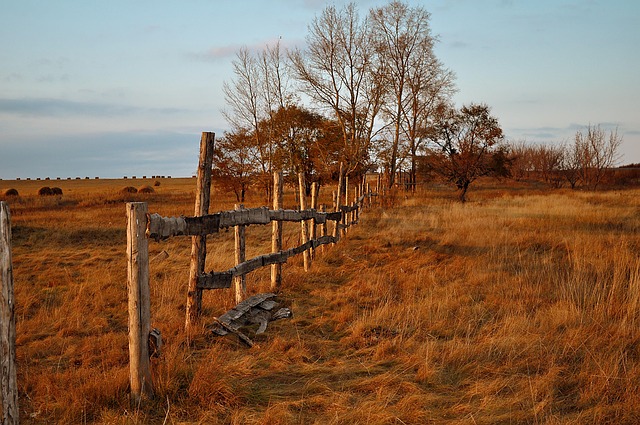In coastal regions, where harsh weather conditions and salty air pose unique challenges, selecting the right fencing material is paramount. This article explores the durability of wooden fencing as a preferred option for safeguarding your property along the coast. We delve into the specific challenges of coastal fencing, highlight the advantages of durable wood species, offer installation and maintenance guidance tailored to these environments, and showcase how these fences can enhance your outdoor space.
- Understanding Coastal Fencing Challenges
- Benefits of Durable Wooden Fencing
- Choosing the Right Wood Species
- Installation Tips for Coastal Conditions
- Maintenance Strategies for Longevity
- Enhancing Your Property with Wooden Fences
Understanding Coastal Fencing Challenges
Coastal areas present unique challenges when it comes to fencing due to their harsh environments. Strong winds, salty air, and frequent exposure to moisture can significantly impact traditional fencing materials. The key challenge is to find a durable solution that can withstand these conditions without compromising aesthetics or functionality. Regular wooden fences often struggle to last long in such settings, as the salt water can lead to rot and decay, requiring frequent repairs or replacements.
To address these challenges, durable wooden fencing for coastal areas needs to be designed with specific considerations in mind. Using treated wood that is resistant to moisture and pests is essential. Additionally, incorporating features like a water-repellent finish, proper drainage, and robust support structures can significantly enhance the longevity of the fence. These adaptations ensure that the fencing not only complements the coastal landscape but also stands the test of time, providing both privacy and protection for years to come.
Benefits of Durable Wooden Fencing
Durable wooden fencing offers a range of benefits for coastal areas, where traditional materials might struggle to withstand harsh weather conditions and salty air. Firstly, wood is an aesthetically pleasing option that can enhance the natural beauty of any landscape. It provides a warm, organic look that complements both residential and commercial properties. Secondly, durable varieties of wood are highly resistant to rot and pests common in coastal regions, ensuring longer-lasting fences without frequent replacements.
Additionally, these types of fences can effectively block wind, providing shelter for gardens or outdoor spaces. They also offer privacy, a valuable asset in areas where open skies meet the sea. Moreover, wooden fencing can be custom-made to suit specific designs and preferences, allowing homeowners and businesses to create unique, eye-catching features that stand the test of time and the coastal elements.
Choosing the Right Wood Species
When selecting wood for coastal fencing, understanding the local climate and environmental conditions is paramount. Saltwater exposure, wind, and moisture are significant factors that can affect the longevity of the fence. Choosing the right wood species is a strategic move to ensure durability. Hardwood varieties like cedar, redwood, and cypress are renowned for their resistance to rot, decay, and insect infestation. These woods have natural oils that repel water and prevent moisture absorption.
Considered excellent choices for coastal areas, these hardwoods possess exceptional strength and stability, making them ideal for withstanding harsh weather conditions. They also age beautifully, developing a distinctive patina over time, which enhances their aesthetic appeal. Additionally, many of these species are sustainably harvested, ensuring an environmentally friendly option for your fencing project.
Installation Tips for Coastal Conditions
When installing wooden fencing in coastal areas, it’s crucial to prepare properly for the unique challenges presented by salt air and frequent moisture. Begin by choosing a durable wood species like cedar or redwood known for its resistance to rot and decay. Ensure proper drainage around the fence line to prevent water accumulation, which can weaken the structure over time.
Before assembly, treat the wooden panels with a high-quality waterproof sealant designed for exterior use. This step is essential to protect the wood from salt spray and prolonged exposure to moisture. Additionally, consider elevated posts set in concrete to safeguard against erosion caused by coastal winds and tides, ensuring your fence stands strong against the elements.
Maintenance Strategies for Longevity
Maintaining durable wooden fencing in coastal areas requires a thoughtful strategy to ensure longevity. Regular cleaning is essential, especially removing salt deposits and algae growth that can weaken the wood over time. A soft brush and diluted bleach solution can effectively clean the fence, preserving its color and integrity.
Painting or sealing the fence annually provides an extra layer of protection against moisture and UV radiation. Using high-quality, weather-resistant finishes designed for coastal environments ensures better durability. Additionally, checking for loose or damaged boards and promptly replacing them helps maintain structural stability and prevents water infiltration, further extending the life of the wooden fencing.
Enhancing Your Property with Wooden Fences
Adding a wooden fence to your coastal property is an excellent way to enhance its beauty and functionality. Wooden fences offer a timeless aesthetic that seamlessly blends with natural surroundings, creating a welcoming and well-defined outdoor space. They can provide privacy from neighboring properties, ensuring you can enjoy your coastal haven without intrusions.
With the right choice of durable wood species, such as treated cedar or redwood, these fences are built to withstand the harsh coastal conditions, including salt air and moisture. This investment not only adds value to your home but also serves as a protective barrier against strong winds and potential intruders, making it an ideal solution for enhancing security and privacy.
